Do Goldendoodles shed? Are Goldendoodles hypoallergenic?
That’s what you’ll want to know if you’re buying one of these pups, especially if you or a family member has a pet allergy.
Well, the good news for you is that, yes, Goldendoodles are considered to be hypoallergenic. However, these dogs do shed to some extent, depending on the generation of the puppy you buy and its coat type.
Keep reading to learn more about pet allergy triggers and Goldendoodle coats.
Table of Contents
Do Goldendoodles Shed?
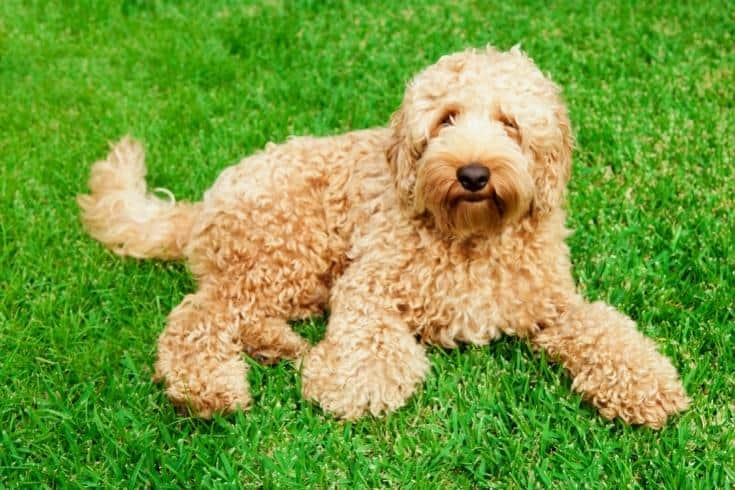
Yes, Goldendoodles do shed to some extent, depending on what generation of Doodle you have.
That’s because the Golden Retriever has a double coat that sheds prolifically all year around, but especially in spring and fall. The Poodle parent, on the other hand, has a single, non-shedding coat.
So, if your puppy’s genetic makeup contains more Golden Retriever than Poodle, the chances are he will shed quite a bit more than a puppy with more Poodle DNA.
Non-Shedding vs. Hypoallergenic
First of all, let’s bust a popular urban myth!
Even if your dog is entirely hairless or doesn’t shed a single hair, he can still trigger pet allergies in sufferers. That said, a non-shedding dog can still be referred to as hypoallergenic.
How so?
Hypoallergenic is the term applied to something less likely to cause allergic reactions in sufferers. So, a dog that sheds very little is less likely to be a problem for an allergy sufferer than a heavy-shedding pup.
Pet Dander
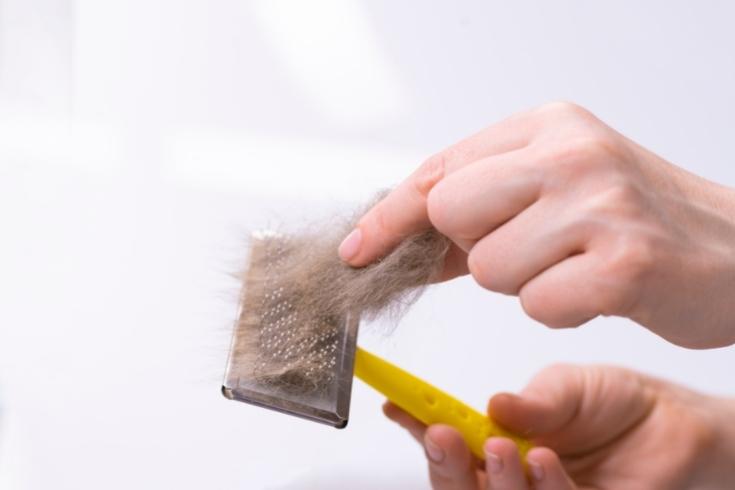
The true cause of pet allergies in susceptible people is dander.
Pet dander comprises dead skin cells, urine, and dried saliva that gets onto the dog when it licks itself. The allergy is triggered by specific proteins found within the dander, causing symptoms including sneezing, a runny nose, itchy eyes, and even asthma and breathing difficulties.
A sufferer doesn’t have to touch the dog to suffer an allergic reaction. When your dog moves around your home, he sheds dander onto your floors, furniture upholstery, and bedding. When anyone walks around your house, they disturb the dander, which then floats up into the air, where the allergy sufferer inhales it.
Dog Hair and Dander
Some dander is often stuck to the hair roots when the dog sheds hair. So, if an allergy sufferer comes into contact with that shed fur, the dander attached to it will kick off an allergic reaction.
How Much Do Goldendoodles Shed?
The answer to that question depends entirely on what generation of Goldendoodle you have.
Generally, Goldendoodles with lots of Poodle genes don’t shed as much as those that take more after their Golden Retriever bloodlines.
Which Generations Of Goldendoodles Shed?
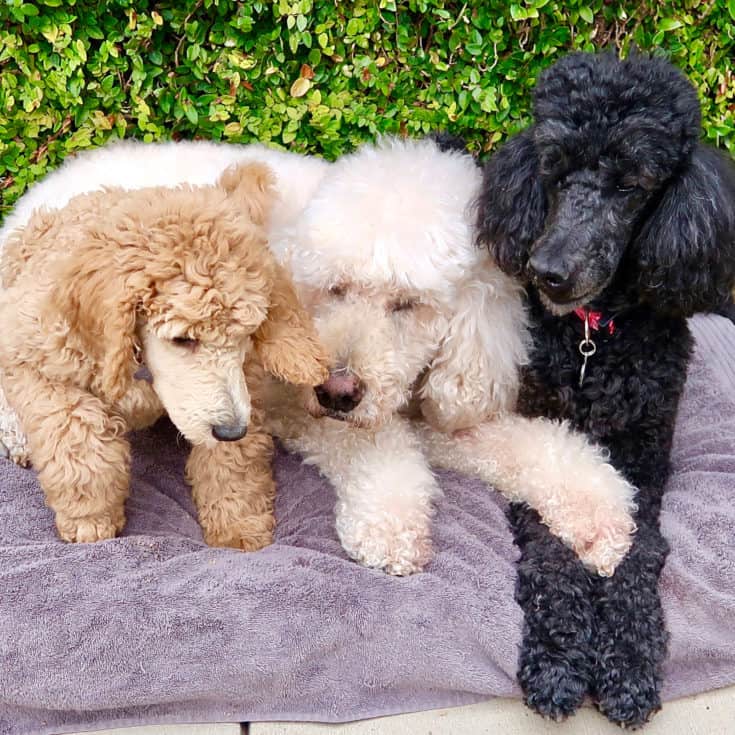
Breeders generally accept that F2 Goldendoodles are more likely to shed than other generations.
These dogs have unpredictable coat types at best, and you must also remember that Goldendoodle puppy coats can change as the dog matures. So, your curly puppy could finish up with a wavy, relatively heavy shedding coat in the long run!
Which Goldendoodles Shed The Least?
If you want a Goldendoodle that barely sheds, you need to go for an F1B generation puppy.
F1B dogs are 25% Golden Retriever and 75% Poodle, meaning that the puppies are likely to inherit curly coats that shed very little.
That said, an F2BB Goldendoodle is 8.75% Golden Retriever and 81.25% Poodle, which should have a very curly coat and minimal shedding. However, second-generation backcross coats are very unpredictable, and some F2BB puppies turn out with straight or wavy coats.
So, it’s best to go for a more predictable F1B generation puppy if you want a Doodle that’s a light-shedder.
How Can I Manage My Goldendoodle’s Shedding and Other Skin Issues?
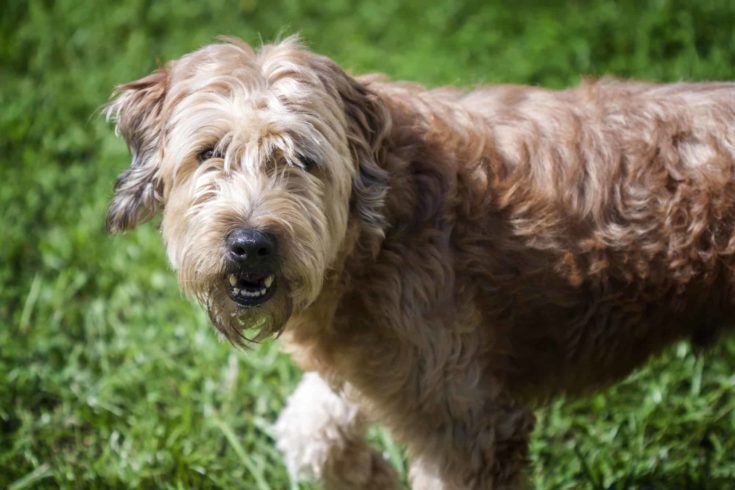
Fortunately, there’s plenty you can do to manage your Goldendoodle’s shedding and other skin issues effectively.
Brushing
Goldendoodles need brushing thoroughly every day or so to keep their fur in good condition and prevent matting. That’s especially true of dogs with curly hair that tangles easily.
Mats can be painful for your dog and often lead to skin infections. So, you must be prepared to spend time brushing your pet.
Brushing your dog can also help to minimize shedding by removing loose hair and keeping the skin in good condition.
Clipping or Shaving
Most Goldendoodle owners find that having their dogs shaved or clipped every four to six weeks can be a highly effective way of minimizing shedding and preventing mats.
You can do the job yourself at home or take your pet to a professional groomer who will show you many different hairstyles that could work for your dog.
Clipping is also a good way of keeping an active dog clean and tidy. However, you still need to brush your dog daily to keep mats at bay.
Shampoos
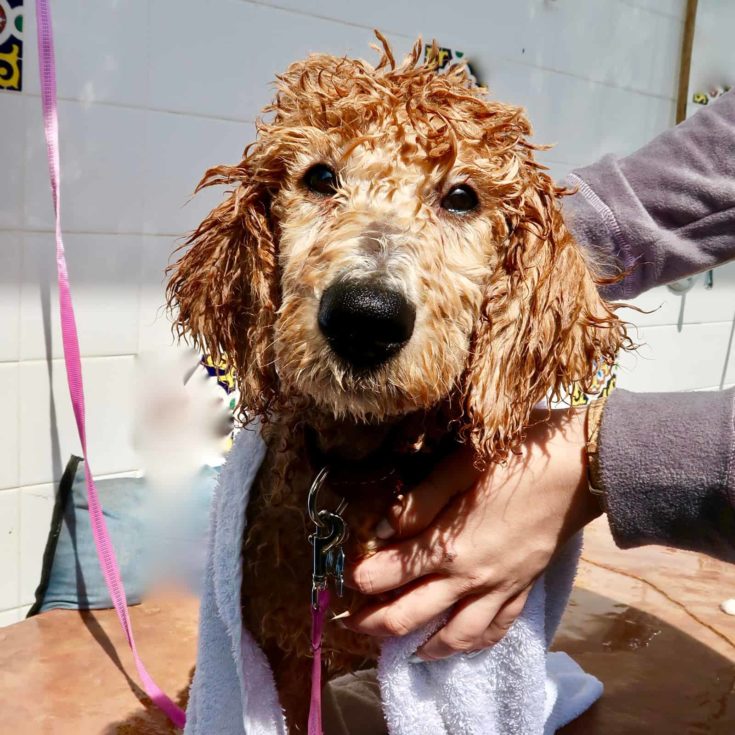
You can help to keep your dog’s skin in tip-top condition by bathing him once a month or so and using high-quality dog-specific shampoo and conditioner. Don’t use human hair products on your dog, as they are too harsh for your dog’s skin and could cause a reaction.
It’s important not to go overboard with bathing your dog, as that can strip valuable natural oils from his skin and leave his coat looking dull and lifeless. However, Goldendoodles are active dogs that enjoy getting down and dirty at the park or on the beach, so you might need to bathe your dog more often to keep him clean.
If your Doodle has a skin allergy or very sensitive skin, your vet will recommend an appropriate product you can use.
Diet
A balanced, nutritious diet is essential for healthy skin. So, you need to avoid cheap dog foods that contain lots of fillers and padding, focusing instead on foods that include Omega-3 and Omega-6 fatty acids that are excellent for skin and coat health.
Supplements and Treats
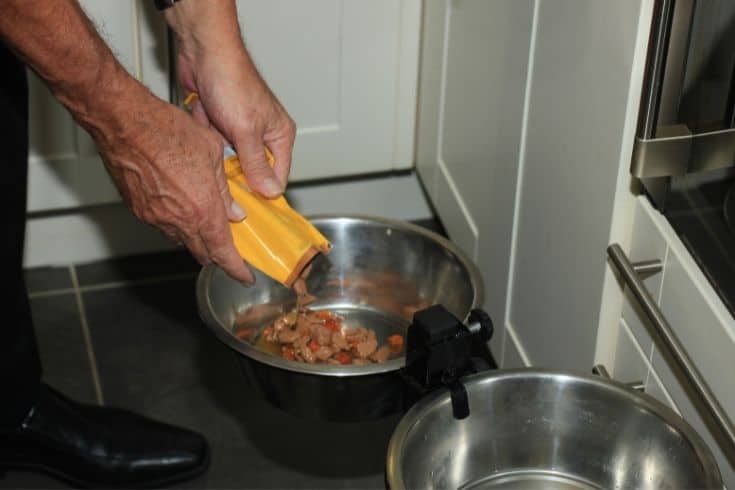
Although good dog food will already contain Omega-3 and Omega-6 fatty acids, if your dog suffers from dry skin, he might benefit from taking a vitamin supplement.
Supplements typically come in liquid or chew form, and you can get treats containing fish oils and a blend of vitamins specifically designed to promote healthy skin and coat.
Deshedding Products
Some Goldendoodles with straight or wavy coats have a thick double coat and need frequent brushing to remove excess hair.
I found that regular brushing and using a de-shedding tool helped enormously when my dog was “blowing” her coat in the spring and fall.
Deshedding tools work by teasing out loose and dead fur in the dog’s undercoat, helping to prevent matting. However, be careful when using one of these tools, as they can be pretty aggressive, and you can leave your dog’s skin feeling sore if you overdo it.
Frequently Asked Questions
In this part of our guide, we answer some of the most frequently asked questions about Doodle shedding and how to manage it.
Q: Do Goldendoodles smell and shed?
A: One of the main attractions of the Goldendoodle is a curly coat that doesn’t shed much. However, that same curly fur is prone to trapping and holding debris and unpleasant doggy odors.
That’s why many Goldendoodle owners have their dogs’ coats shaved short.
Q: Are Goldendoodle coats high maintenance?
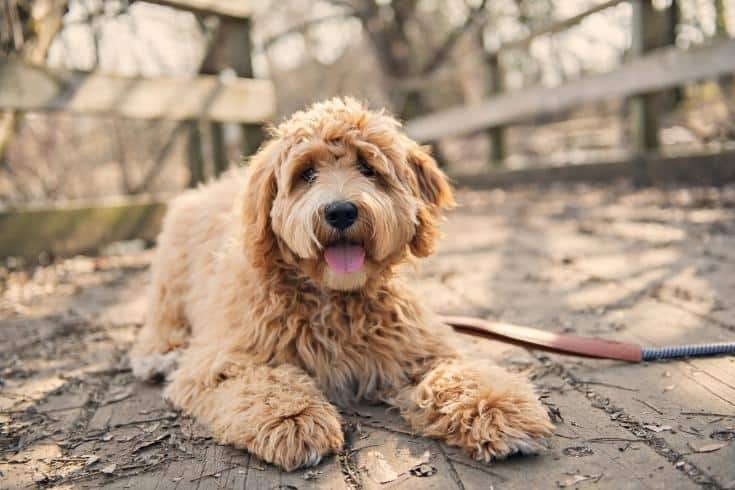
A: Goldendoodle coats can be pretty high maintenance. If you have a wavy or straight-coated variety of Doodle, you can expect to brush his coat thoroughly every other day. Curly coats need brushing daily, especially if allowed to grow long.
If you don’t brush your dog, tangles and mats will form in the hair, potentially causing skin infections.
Q: When do Goldendoodles shed their puppy coat?
A: Doodles tend to shed their puppy coats between four to eight months of age.
Q: Do Goldendoodles shed more in summer or winter?
A: Like their Golden Retriever parents, Goldendoodles have a double coat. In the late spring and fall, Goldendoodles shed their fluffy undercoat and grow a new one.
That said, the more Poodle genes your dog has, the less he will tend to shed since the Poodle has a single coat.
However, Doodles don’t shed any more or less in summer or winter.
Q: What if your Goldendoodle is shedding more than usual?
A: If your Goldendoodle starts losing hair, you should be concerned.
Some health conditions and parasite activity can cause shedding. Other things, such as medications, grooming products, stress, allergies, and poor nutrition, can all cause your dog to shed his fur.
My dog began shedding the fur from her paws. Clearly irritated, my poor pup nibbled and chewed her feet until they were red-raw. I took Jess to the vet, who carried out tests on the skin of my dog’s paws. It turned out that Demodex mites were the culprit. Fortunately, a course of the medication quickly cleared up the problem.
Beware of bathing your Goldendoodle too often. Excess bathing can also lead to skin irritation that can cause your Goldendoodle to shed more.
Final Thoughts
Did you enjoy our guide to Goldendoodle shedding and the breed’s hypoallergenic qualities? If you did, please remember to share the article before you go.
Goldendoodles shed their coats, but how much they shed depends on the dog’s coat type and generation. Basically, if you want a dog that doesn’t shed much, go for a curly-coated F1B Goldendoodle.
What type of coat does your Goldendoodle have? Tell us in the comments box below!
